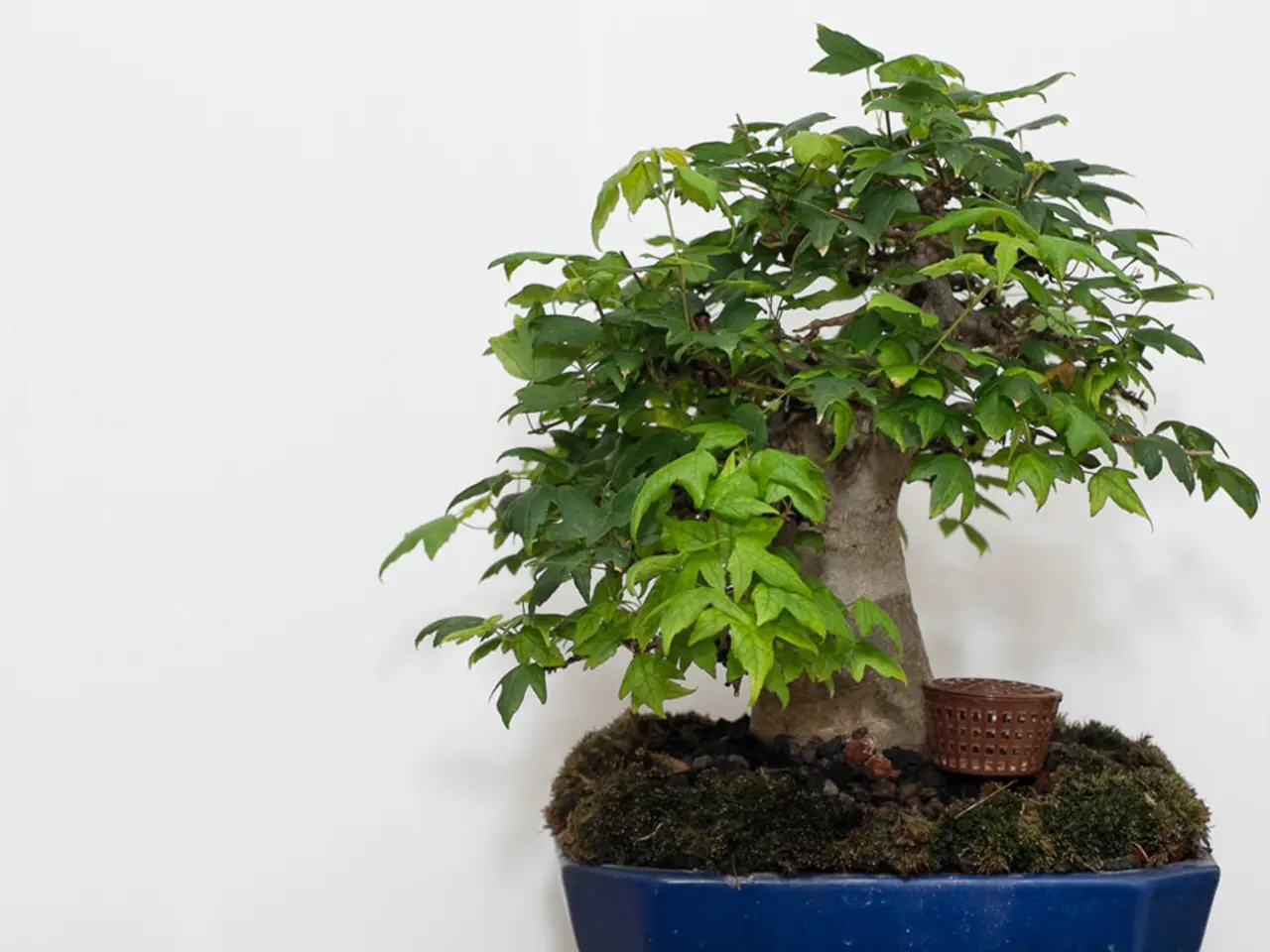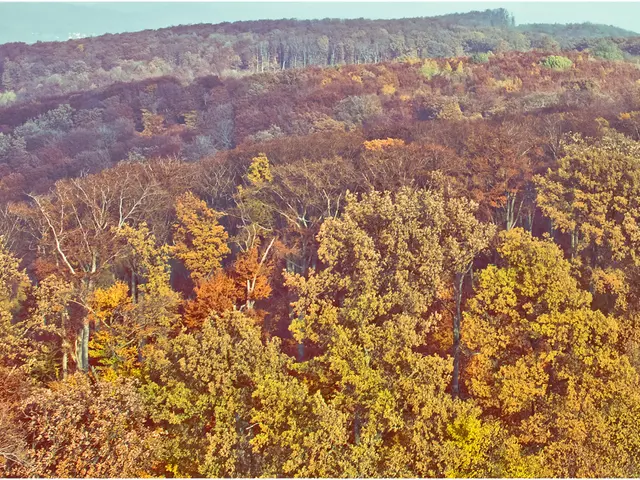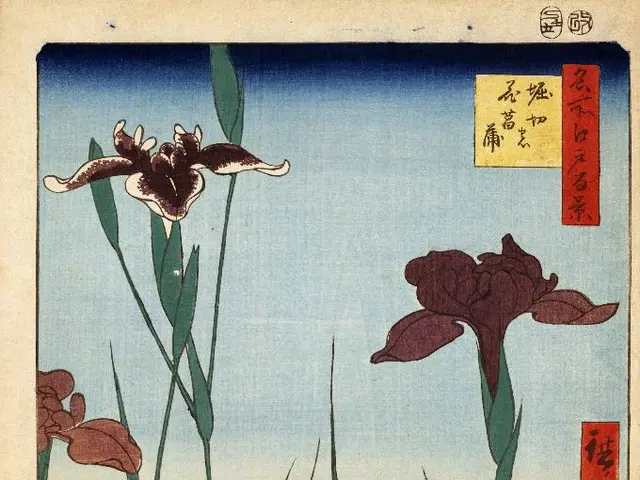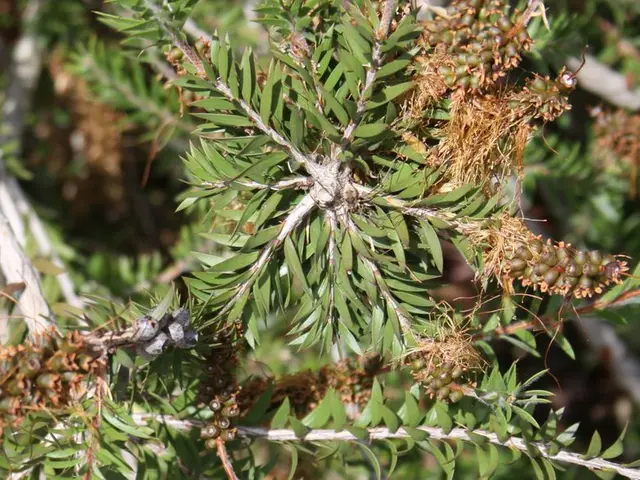Top Picks for Bonsai Starters' First Attempts
Dive into the captivating realm of bonsai, where you can savor the charm of nature in a diminutive dimension right within your abode! Bonsai trees aren't just plants; they're a blank canvas for creativity, persistence, and keen attention to detail.
Bonsai is about sculpting trees into living art. Each unique species presents its own set of challenges yet rewards, making bonsai both fascinating and gratifying. This guide will help you traverse the plethora of lovely plants that are perfect for bonsai, allowing you to cultivate your miniature forest reflecting both art and nature. Whether you're a novice or a seasoned enthusiast, these recommendations will equip you to make the right choice for your tree companion.
So, buckle up for an exhilarating ride through the incredible world of diminutive arboriculture!
Best Trees for Your Bonsai Expedition
1. The Resilient Fig – Ficus
Ficus bonsai, a forgiving choice for inexperienced fingers, prospers indoors under bright, indirect light with minimal fuss. Its sturdy build and adaptability to less-than-ideal conditions make it a robust pick for newbies.
Ficus varieties boast thick trunks and pliable branches, easily manipulated to suit diverse shapes and styles. Their robustness and thriving under low humidity environments, a common characteristic in homes, make them a delight to cultivate. With lush green leaves ready for pruning into formations, Ficus bonsai offer an engrossing experience.
They are a testament to the versatility of bonsai trees, growing vigorously and responding well to pruning, which encourages a thick, woody trunk and a mature, miniature tree appearance.
2. The Unyielding Juniper
Juniper bonsai are beloved for their rugged nature and unique foliage, an ideal choice for outdoor spaces.
These trees thrive in full sun and embody the spirit of bonsai with their wind-swept forms, representing resilience in their growth. Junipers are rather adept at dealing with dry conditions, making them suitable for forgetful gardeners.
Juniper bonsai demand a careful balance of sun and moisture, mimicking the rugged terrains they might naturally dwell. Their ability to conform to aesthetically pleasing shapes with dense foliage makes them a favorite among enthusiasts, requiring thoughtful pruning during the warmer months to maintain an attractive, compact look.
3. The Jewel of Shrubbery – Cotoneaster
Cotoneaster is a charming addition to your bonsai voyage because of its small, shiny leaves and ability to yield both berries and flowers, adding bursts of color to your collection.
This hardy shrub adapts well to pruning and is versatile when it comes to styles, making it a delightful choice. It's particularly suitable for informal upright styles, benefiting from its preference for sunlit spots.
In addition to its decorative qualities, Cotoneaster is drought tolerant once established and does well in a combo of full sun and partial shade.
A compelling aspect of Cotoneaster is its seasonal changes, which offer a visually engaging transition throughout the year. As the seasons shift, the appearance of the Cotoneaster evolves, from flowering in spring to bearing fruit in autumn, keeping the art of bonsai intriguing.
4. The Strong-Willed Chinese Elm
Chinese elm bonsai are a popular and welcoming tree species for both beginners and advanced growers. Its graceful, arching branches, lush green leaves, and adaptability to pots make it an easy comfy fit.
Chinese elms are versatile, excelling indoors and outdoors, making them a reliable selection for almost any setting. Their appeal lies in their resilience to various climates and pests, which simplifies their care. The unique, exfoliating bark adds character, making each tree one-of-a-kind.
Whether grown indoors under bright, indirect light or outdoors in the open, the Chinese elm bonsai remains a dazzling pick for anyone starting out in the enchanting world of bonsai.
5. The Elegant Japanese Maple
Japanese maples are synonymous with bonsai beauty, known for their dazzling colors and diverse leaf shapes. In autumn, their foliage bursts into a roaring display of reds, oranges, and yellows, stealing the show.
These maples thrive under partial shade and well-drained soil, ideal for those exploring visually striking bonsai. However, Japanese maples require gentle care, as they can be finicky when it comes to watering and need protection from the scorching midday sun. Their fine roots need to be handled with care during repotting.
The reward for this mindful attention is a resplendent, sculptural tree that embodies traditional Japanese gardens' elegance and tranquility, earning them adoration among bonsai enthusiasts worldwide.
6. The Esteemed Cedar
Cedar trees, with their strong trunks and sprawling branches, symbolize power and perseverance in bonsai art.
These trees appreciate full sun and can handle some drought, preferring deep, infrequent waterings and plenty of room to expand. For the ambitious sparked by a challenge, cedar bonsai offers a thrilling journey. Its woodsy scent and evergreen foliage bring the forest right into your home or garden.
Training a cedar bonsai involves careful pruning to preserve its miniature size and encourage lush growth. A well-cared-for cedar may mature into a centuries-old treasure, passed down through generations.
7. The Flamboyant Azalea
Azaleas are among the most beautiful flowering bonsai, with a romantic array of white to deep pink blooms. They are favorites in bonsai because of their ability to mould almost any style and their dramatic flowering season, which can transform any space into a captivating display of color.
Azaleas require acidic soil and consistent moisture to keep their delicate roots healthy, and they love bright, indirect light. Pruning azaleas is a fine mix of science and art, requiring precise timing to allow flowers to bloom on new growth.
These plants appeal to those who appreciate the delicate balance between foliage and floral display, as they provide an awe-inspiring spectacle showcasing the cycles of growth and renewal. With their dense, lush foliage and the flamboyant flair of their flowers, azaleas are outstanding choices for those seeking to add an air of drama to their bonsai adventure.
Conclusion
Bonsai art offers a remarkable fusion of horticulture, creativity, and perseverance, posing a rewarding challenge as you nurture your miniature trees. From the resilient Ficus and the rugged Juniper to the flowering splendor of Azaleas, each bonsai tree infuses its unique spirit and distinct needs into your collection. Whether you embrace the deciduous beauty of Japanese Maples or the evergreen grandeur of Cedars, there is a tree that speaks your soul within the enchanting world of bonsai.
Always remember, embarking on the bonsai journey isn't just about watching trees grow; it's about realizing the transformation within yourself as you gain patience, wisdom, and the undying appreciation for the delicate and intricate dance of nature. So, select a tree that stimulates your inner artist and start shaping the canvas of your dreams!
- For a lively indoor bonsai adventure, consider the adaptable Ficus bonsai, perfect for beginners, sporting thick trunks and twirlable branches that are both engrossing and easy to manipulate.
- To bring the outdoors to your garden, rugged Juniper bonsai thrive in full sun and make an ideal choice for those seeking wind-swept resilience.








